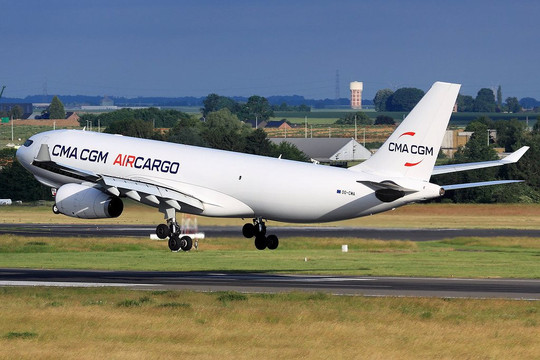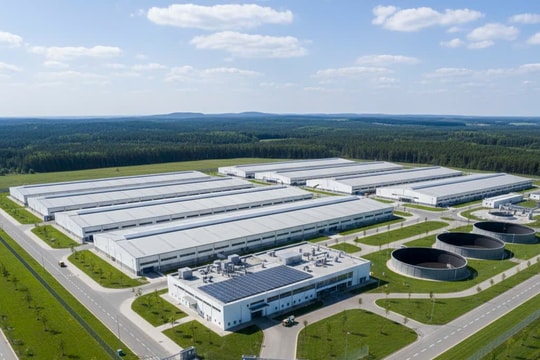Recalling the beginning of 2020, the first year in which the world, in general, and Vietnam in particular, were hit by the Covid-19 pandemic, culminating in the disruption of the supply chain in China. By 2022, when the pandemic was partly under control, the Russia-Ukraine war broke out, dealing a strong blow to the weakly recovering global economy. But before that general difficulty, a few specific enterprises in the logistics industry developed and rose strongly. According to the analysis of fifteen logistics enterprises listed on the Vietnam Stock Exchange in the past five years, the main factors affecting the performance including: marketing costs, technology innovation costs. Especially the CEO’s gender, age and education level also contributed significantly.

Experience- the key to help the CEO "drive" the business effectively?
According to the analysis data of fifteen logistics enterprises
listed on the Vietnam Stock Exchange in many different service
sectors in the industry, such as: Sotrans and Gemadept in
the field of warehousing; Vietnam Airlines Corporation and
Tan Son Nhat Airport Services Joint Stock Company in the
field of transportation; Saigon Cargo Services Joint Stock
Company and Cat Lai Port Joint Stock Company specializing
in the port operation segment, etc., show that the efficiency
and sustainability of a logistics business can be measured by
the criteria of profit after tax and long-term asset structure.
This quantitative measurement aids in objectively assessing
the amount of crisis tolerance as well as the vision of an
enterprise’s leader.
CEO characteristics statistics show that empiric leaders tend to have a harder time adapting to the “new normal” than 7x or even 8x generation CEOs. The main reason is that young leaders have a strong spirit of innovation, are willing to change, and are “stronger” in investments in infrastructure, warehouses, or long-term assets. An interesting point of the analysis shows that the gender factor also has a significant impact on the business performance of logistics enterprises, specifically, women will tend to control costs and help bring better returns than male leaders.
Will digital transformation or marketing strategies help businesses overcome the crisis?
Digital transformation is a trend of interest in many
industries in general, both in the public and private
sectors, and the logistics industry is no exception.
Decision No. 749/QD-TTg of the Prime Minister
approving the “National Digital Transformation
Program to 2025, with an orientation to 2030”,
created a premise for activities oriented to apply
technology to take place. more prominent than
ever. However, the decisive factor for success in
digital transformation still lies in the determination
and vision of the business owner. Indeed, through
the analysis of 15 listed logistics enterprises,
business activities are only really effective when
combining the long-term vision and leadership of
the CEO with the specific plans and goals in each
stage.

Besides, the analysis data also shows another interesting result that the higher the cost of logistics enterprises to invest in marketing, the worse the business performance is. The main reason for this adverse effect is mainly because businesses do not have a clear long-term marketing strategy, but only focus on advertising at times and events such as launching new products and services, opening a new branch, expanding a warehouse, or experiencing periods of decline in business volume. According to the author, a good marketing campaign always requires a thorough understanding and coordination between the elements of goods and services, prices, target markets, forms of attraction, and core needs of customers, the results of marketing activities always have a certain lag compared to the results of selling activities, leading to the cost of not keeping up with the effective network, which has been replaced by marketing activities. Other results lead to businesses “losing costs” but the results are not as expected (not to mention some cases where there are no specific expectations to measure). In contrast, the first transformation, when executed with thorough study, picking the right trade-off threshold between the cost of employees operating daily job and the investment capital for the transformation project, will deliver significant benefits. Businesses can reap significant benefits from reducing their reliance on human factors, especially for simple, repetitive tasks.
In short, whether a logistics business operates effectively or not depends on many factors, such as the CEO’s management ability, the project implementation capacity of the division directors, as well as the reasonable allocation of costs. investment, expenses for technology innovation activities, advertising, and marketing. And above all, the belief in the organization, the best efforts of all employees are always the motivation to create strength to help every business be able to overcome and develop in the face of all difficulties and challenges.





.png)
.png)
.png)


.png)
.png)






.png)

